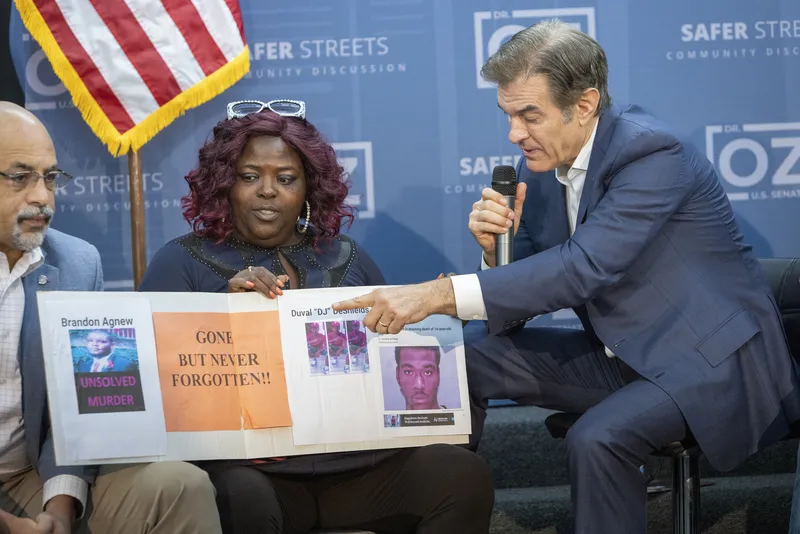Tearful Victim Actually a Campaign Worker
Conservative Group: Coverage Favors Democrats
N.Y. Times Editorials to Take on Political Violence
Marsalis Says the Press Doesn’t Take Jazz Seriously
‘Racism and Abuse Toward Black Migrants’
Weak Immigration Coverage Has Consequences
BBC Details Beating Deaths of African Migrants
‘Jerry’ Vazquez of Telemundo Houston Dies at 54
Short Takes: Comics journalist Josh Neufeld and Kansas City reparations; News Leaders Association’s diversity survey; CCNMA: Latino Journalists of California; James Finch; Ron Claiborne; latest Hollywood diversity report; Andrew Humphrey; “NextGenRadio: Indigenous”; training “citizen journalists”in Salem, Ore., and Syracuse; reviving the Nashville Banner; documentary on displaced Black New Orleanians; Gloria Rojas; Latinos and proposed abortion bans; Los Angeles Times’ Día de Muertos digital altar,” Hawaii’s pop-up newsrooms; UC Berkeley’s Geeta Anand; Janet Wu;
Enlace Latino NC, Montana Free Press and Santa Cruz Local; deleting Liberian news site’s investigation; Britain’s first visibly Black TV journalist; changes for BBC’s Africa Service journalists; outsize coverage for anti-Arab, far-right Israeli politician; Russian funding of U.S. media; closing CBC’s Beijing bureau; unprecedented targeting of Sudan’s media; Pegasus spyware in Mexico; arrest of female Iranian journalists; Somali journalists killed with impunity
Homepage photo: In Philadelphia, Republican U.S. Senate candidate Mehmet Oz talks with Sheila Armstrong, whose nephew and brother were fatally shot and killed. (Credit: Alejandro A. Alvarez/Philadelphia Inquirer)
Support Journal-ismsOz/Trump supporters, most prominently Sheila Armstrong, confront a small group of Germantown residents protesting a Dr. Oz campaign stop in the East Germantown section of Philadelphia. (Danielle Finger/YouTube)
Tearful Victim Actually a Campaign Worker
“A touching moment at a recent campaign event for Dr. Mehmet Oz in Philadelphia — in which a Black woman broke down in tears as she described the fatal shootings of her brother and nephew, and was comforted by the Republican Senate candidate — made for riveting television, and brought to mind the former daytime TV host’s old namesake show,” Robert Mackey reported for the Intercept.
“Three weeks later, after the encounter was featured in local and national news reports, journalists who covered the event discovered that they had been duped by the Oz campaign into reporting as news a scene that had more in common with reality TV.
“The woman, Sheila Armstrong, sat next to Oz at a September 19 event his campaign described as a ‘community discussion’ in Philadelphia’s Germantown neighborhood. Armstrong held a handmade sign which said that her lost relatives were ‘gone but not forgotten,’ and her anguished tears were broadcast to the city that day by the local NBC News affiliate, and described in reports on the event by the Philadelphia Inquirer and KYW Newsradio.
“The emotional encounter between the candidate and a victim of gun violence who had suffered so deeply was brought to national attention this week by The Associated Press,” Mackey wrote Oct. 13, “in a feature story on the competition over Black voters in the Pennsylvania Senate race between Oz and his Democratic opponent, John Fetterman, the state’s lieutenant governor. When the AP story was first published on Tuesday, it began this way:
” ‘As Sheila Armstrong grew emotional in recounting how her brother and nephew were killed in Philadelphia, Dr. Mehmet Oz — sitting next to her inside a Black church, their chairs arranged a bit like his former daytime TV show set — placed a comforting hand on her shoulder.
” ‘Later, he gave her a hug, and said, “How do you cope?”
“That text account . . . was posted on the AP’s website, and distributed to the hundreds of news organizations that reprint AP reporting, accompanied by a photograph of Armstrong drying her tears as Oz leaned in to hug her.
“As the text and photo accounts of the exchange between Oz and Armstrong were reproduced by news organizations across the country that subscribe to the AP’s wire service, Fetterman’s campaign manager, Brendan McPhillips, complained on Twitter that the AP had failed to share a pertinent fact with readers: that Armstrong is not an ordinary voter but a paid member of the Oz campaign staff,” with Armstrong earning more than $2,000 at the end of June, according to FEC data.
“Although the AP updated the text of its report to add a reference to Armstrong’s employment . . . it seems clear that the news organization only became aware of her status after publication. ‘As soon as AP learned of Armstrong’s campaign affiliation and confirmed it, we updated our story,’ a spokesperson for the news organization told me in an email. . . .
“There is nothing new about a political campaign carefully stage-managing a public event to get good publicity or using the news media to broadcast a favorable message to the public. But by inviting reporters to cover a community discussion with Oz and not revealing that a featured speaker, Armstrong, was a paid staffer, the former TV host’s aides seem to have successfully tricked reporters into presenting a staged, reality TV scene as if it were news.
“What’s more, despite Armstrong’s suggestion that the whole point of the event was to discuss gun violence, the four-part plan to ‘fight for Black communities’ Oz unveiled during his visit to Philadelphia that day made no mention of any measures to take guns off the city’s streets. . . .”
- Zeeshan Aleem., MSNBC: Why Jan. 6 is (rightly) missing from the Dems’ midterms message
- Jenice Armstrong, Philadelphia Inquirer: Some Philly residents are more concerned about bullets than ballots
- Perry Bacon Jr., Washington Post: Elections aren’t only about ‘the economy, stupid’ — and never were
- Dan Balz, Washington Post: Democrats count on huge Black turnout, but has the party delivered in return?
- Kalle Benallie, ICT: Indigenous Voters Talk Midterm Election
- Hayes Brown, MSNBC: Americans believe crime is way, way up. The stats don’t match that. (Oct. 28)
- Jonathan Capehart, Washington Post: How Zeldin’s tough talk on crime in New York could lead to more of it
- Kiana Cox and Khadijah Edwards, Pew Research Center: Black Americans Have a Clear Vision for Reducing Racism but Little Hope It Will Happen (Aug. 30)
- Arturo Domínguez, Latino Rebels: Futuro Poll: Latino Independents in Georgia Favor Kemp Over Abrams
- Justin Gest, CNN: The role race plays in Latinos voting
- Jens Manuel Krogstad, Khadijah Edwards and Mark Hugo Lopez, Pew Research Center: Most Latinos Say Democrats Care About Them and Work Hard for Their Vote, Far Fewer Say So of GOP (Sept. 29)
- Tony Norman, Pittsburgh Next: Allan Francette of Big Al’s Unisex Hair can relate to John Fetterman’s struggle
- Holly Otterbein, Politico: How Fetterman drew Oprah into the race against Oz
- Carlos Edill Berríos Polanco, Latino Rebels: Latino Voters in Pennsylvania Back Fetterman in Futuro Media Poll
- Levi Rickert, Native News Online: What Have Democrats Done for Indian Country Lately?
- Neil G. Ruiz, Sunny Shao and Sono Shah, Pew Research Center, What It Means To Be Asian in America (Aug. 2)
- Rod Watson, Buffalo News: What an election – the fabulists vs. the deaf-mutes
Conservative Group: Coverage Favors Democrats
 “Four years ago, TV’s midterm coverage hammered Republican candidates and then-President Trump with 88 percent negative spin while sparing Democrats similarly bad press,” Rich Noyes wrote Nov. 1 for the right-wing Media Research Center.
“Four years ago, TV’s midterm coverage hammered Republican candidates and then-President Trump with 88 percent negative spin while sparing Democrats similarly bad press,” Rich Noyes wrote Nov. 1 for the right-wing Media Research Center.
“This year, Democrats are in charge of the White House and both chambers of Congress, yet a new Media Research Center study of ABC, CBS and NBC evening newscasts finds that Republicans are receiving coverage that is just as negative (87% negative) as in 2018, while Democrats — including the President — are drawing far less scrutiny than the party out of power.
“And another favor for Team Blue: the dominant topics within these campaign stories — GOP candidate controversies, abortion rights and the danger of ‘election deniers’ — perfectly match the topmost items in Democrats’ campaign playbook. Our study shows discussion of these issues within campaign stories far eclipsed that of the economy and inflation, issues that voters deem most important. . . .”

Members of the Ku Klux Klan and others set fire to a boat representing Vietnamese shrimping boats in 1980. “There is no federal anti-paramilitary law, though Congress should consider one,” the New York Times editorializes. “States, however, do have legal instruments to deal with these extremist groups, even if they rarely show the will to use them. When they do, these laws are effective.” (Credit: Houston Metropolitan Research Center, Houston Public Library)
N.Y. Times Editorials to Take on Political Violence
“On Thursday, The New York Times editorial board introduced a series called ‘The Danger Within,’ urging readers to understand the danger of extremist violence and possible solutions,” Tom Jones reported for the Poynter Institute. The first piece is headlined, “America Can Have Democracy or Political Violence. Not Both.”
 In an accompanying column, Kathleen Kingsbury (pictured), Opinion editor of the Times, wrote, “Americans are right to be nervous about the coming midterm elections, and not only about the results. It will be the first time that the nation’s electoral machinery will be tested after two years of lawsuits, conspiracy theories, ‘audits’ and all manner of interference by believers in Donald Trump’s lies about the 2020 election.
In an accompanying column, Kathleen Kingsbury (pictured), Opinion editor of the Times, wrote, “Americans are right to be nervous about the coming midterm elections, and not only about the results. It will be the first time that the nation’s electoral machinery will be tested after two years of lawsuits, conspiracy theories, ‘audits’ and all manner of interference by believers in Donald Trump’s lies about the 2020 election.
“I’m nervous for another reason as well: the embrace of violent extremists by a small but growing faction of the Republican Party. Today’s editorial, the first in a series on violent extremism, will explore this peril and what we can do about it. . . .”
Kingsbury concluded, “In the past few years, there have been plenty of points at which it feels as if the future of the nation hangs in the balance. Peaceful politics are all we have to manage our deeply divided democracy. Lose that and the country is headed for a dark place — that’s what this series of pieces on extremism is trying to help avoid.”
- Jamelle Bouie, New York Times: This Is What Happens When Republicans Tear Off Their Masks
- Charles M. Blow, New York Times: Extremism Is on the Rise … Again
- Hayes Brown, MSNBC: The MAGA crowd’s dishonest counterpoint to Biden’s plea to save democracy
- Hayes Brown, MSNBC: How racism and economic anxiety fuel the GOP’s war on democracy
- Mary C. Curtis, Roll Call: When will Republicans reject fear, ignorance, bigotry and smear?
- Paul Farhi, Washington Post: NBC retracts erroneous Paul Pelosi story that fueled conspiracy theories
- Renee Graham, Boston Globe: The ‘civility’ party could use some humanity
- Annie Karni, Malika Khurana and Stuart A. Thompson, New York Times: How Republicans Fed a Misinformation Loop About the Pelosi Attack
- Leonard Pitts Jr., Miami Herald: What did they do with their humanity?
- Reveal, from the Center for Investigative Reporting: The Ballot Boogeymen: Extreme new laws built on Trump’s Big Lie crack down on a phantom problem: widespread voter fraud.
- Eugene Robinson, Washington Post: Biden fears for democracy. It might not matter in the midterms.
- Vera Bergengruen, Time: The United States of Political Violence
- Erik Wemple, Washington Post: James Bennet was right (Oct. 27)
(Credit: David Rubenstein Show/YouTube)
Marsalis Says the Press Doesn’t Take Jazz Seriously
“The average white jazz writer is actually a rock fan who’s for a long time wished that jazz could actually be something else without Black folks at the core of it, or that maybe jazz would just die away,” according to Wynton Marsalis, the esteemed trumpeter who is managing and artistic director of Jazz at Lincoln Center.
The center says its 2022-23 season “illuminates, actualizes, and reaffirms the notion of jazz as a global language and the music’s power to bridge divides and coalesce distinct communities.”
Marsalis made the comments on PBS’ “The David Rubenstein Show: Peer-to-Peer Conversation.” (video). The interview was recorded Oct. 31, 2020, but shown this past week.
Rubenstein, who is also a billionaire investor and philanthropist, asked Marsalis, “Do you feel that in the music world you are not treated as you would be if you were white?”
Marsalis replied, “Yes, I feel that.
“I feel it in the level of patronization that I receive. The low level of criticism of our music.
“I’m subject to things, of course, nothing like what I grew up with, nor do I make a habit of complaining about it constantly, because I’m also treated in a way — with so much respect by so many people that for me to complain would be past gratuitous.
“So if you ask me the question directly, yes, I have been treated unfairly by newspapers, something like The New York Times; the way our institution, Jazz at Lincoln Center, has been covered is abominable.
“Even though we get articles, the quality of those articles [is] always very poor, poorly researched. The writers oftentimes down through the history lack the intelligence and depth of engagement with the form to be qualified to speak on it in the paper of record, but because it’s jazz, it doesn’t matter. So that’s only in direct response to your question. I don’t want to confuse it with when I was growing up or the situations that I found myself in, or my father’s situation or grandfather’s or let’s go back in the generations.
“I’m not doing that, and I’m very, very grateful for how I’ve been treated by people all over this country of all kinds.”
One can’t separate the way jazz, “our national art form,” is treated from how African Americans are, Marsalis continued.
“The central question of jazz’s position in our country concerns the relationship of slavery to the American identity in our mythology as a country. Black Americans by and large in our country have little or no knowledge of jazz, and jazz is the greatest achievement of the Afro-American culture in the context of the American culture, meaning it’s Afro-American but it applies to all Americans, as many things in American culture apply to all Americans.
“Our poor public education system makes sure that a certain group remains ignorant, and the average white jazz writer is actually a rock fan who’s for a long time wished that jazz could actually be something else without Black folks at the core of it, or that maybe jazz would just die away.
“That’s why if you study jazz, there’s a longstanding tradition of article after article in decade after decade saying, ‘Is jazz dead?’ That’s probably one of the most questions that’s been asked since the 1930s. Now all of this investment in the destruction of jazz is to further obscure a big lie that jazz uncovers, and it’s important to look at this because it’s a serious thing to consider if we are to transform our nation.
“If we say our nation is based on human freedom, and we’re the first on Earth founded on the glorious celebration of human freedom, dignity and rights, how do we then reconcile and correct the systemic dehumanizing ownership and brutalizing of a large underclass of people for free labor because of their skin color?
“It’s too much injustice to correct, so we’re forced to say that those people are responsible for the problem, they’re less than human, and it’s just their condition, but if they aren’t, it’s not their condition, it means that our mythology and belief about ourselves is not true. Now is Elvis going to not be the king? Man, where you gonna put jazz if Elvis is the king? . . .”
A New York Times spokesperson did not respond to a request for comment.
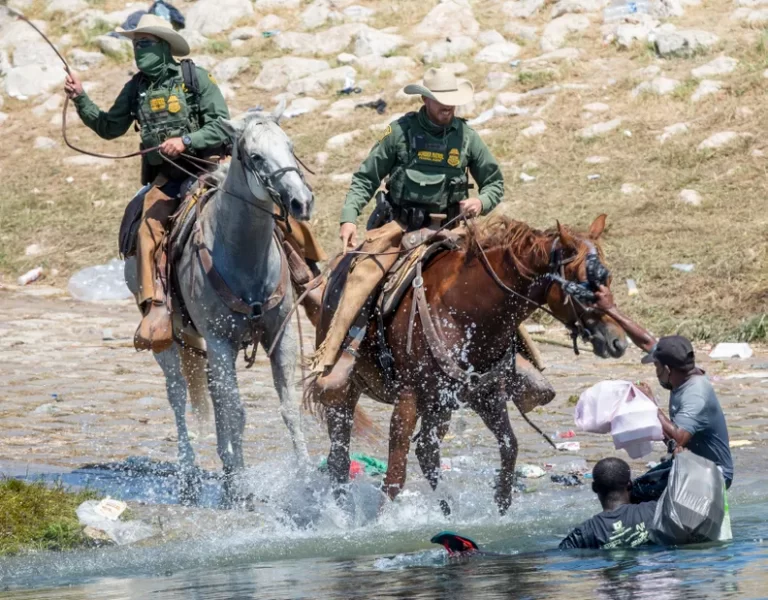
‘Racism and Abuse Toward Black Migrants’
“After analyzing the records of nearly 17,000 calls between 2016 and 2021 from its national immigrant detention hotline, Freedom for Immigrants released a report Wednesday that it and other advocacy groups say indicates a pattern of racism and abuse toward Black migrants,” Andrea Castillo reported Oct. 27 for the Los Angeles Times.
“Among the findings of the report, the groups concluded that 28% of 2,200 abuse-related reports came from detainees from predominantly Black countries, despite accounting for 6% of the detained population in 2019, according to their analysis of the most recent population data by country of origin from the Transactional Records Access Clearinghouse, a nonpartisan data research organization at Syracuse University. Freedom for Immigrants and the other groups behind the report, including the Black LGBTQIA+ Migrant Project, the Black Alliance for Just Immigration and the UndocuBlack Network, advocate for the abolition of immigrant detention.
“According to the study’s methodology, the analysis assumes that detainees calling from Black-majority countries are Black. The authors filtered call records for phrases indicating verbal or physical abuse, such as ‘medical neglect,’ ‘assault,’ and ‘N Word.’
“Alexxis Pons Abascal, a spokesman for U.S. Immigration and Customs Enforcement, said in a statement to The Times that the agency is committed to ensuring that everyone in custody is safe and under the appropriate conditions of confinement. He said ICE encourages people to report allegations of misconduct.
” ‘Personnel are held to the highest standards of professional and ethical behavior, and when a complaint is received, it is investigated thoroughly to determine veracity and ensure comprehensive standards, which ICE is required to follow, are strictly maintained, and enforced,’ Pons Abascal wrote.
“Black migrants are placed in solitary confinement at higher rates than non-Black migrants, according to the Black Alliance for Just Immigration. In some facilities in the South, including Etowah County Jail in Alabama, Stewart Detention Center in Georgia and Richwood Correctional Center in Louisiana, Black people were almost twice as likely to report experiencing abuse compared with detainees of other races, the groups’ report notes. . . .”
Define American video points out inadequacies of news coverage of immigrants in North Carolina media.
Weak Immigration Coverage Has Consequences
“The failure to reflect the full diversity of the immigrant population came through in our content analysis of 22 news outlets that spanned the state and media type,” Liz Robbins of the group Define American, founded by former reporter Jose Antonio Vargas, wrote Oct. 27 for the Poynter Institute.
Robbins was referring to Define American’s report “Reimagining Immigration News: North Carolina’s Case for the Nation,” which used the state as “a bellwether for the nation” in analyzing immigration coverage.
North Carolina’s “media landscape also reflects wider trends in the journalism industry: a collapse of legacy news, reliance on early-career reporters to cover underrepresented communities, and the rise in nonprofit niche outlets.”
Robbins continued, “Conducted by the Media Ecosystems Analysis Group, the analysis showed that while Latinx communities dominated, news outlets severely neglected Asian American and Pacific Islander communities. They represent nearly a third of all immigrants in the state (compared to the half that are Latinx), but were only featured in less than 5% of news stories.
“Consistent coverage of immigrant communities matters because of the prevailing misinformation that news consumers receive about immigrants. The University of Florida’s Center for Public Interest Communications conducted a survey of 1,160 North Carolinians for our report. Those who said they knew the most about immigration actually knew the least –- and were most likely to believe harmful stereotypes.
“We found, however, that good journalism can help shift those perspectives.”

Jaskaran Malhotra, captain of the Morrisville Cardinals, right, laughs with teammates before a match between the Cardinals and the Atlanta Param Veers during the inaugural Toyota Minor League Cricket Championship at Church Street Park in Morrisville, N.C., on Aug. 8, 2021. The story was cited as an example of productive coverage of immigrants. (Credit: Ethan Hyman/News & Observer)
Other key findings:
- “Immigration reporting often reinforces stereotypes. Among the negative connotations, the most prevalent was the representation of immigrants as either criminals or victims of crime.
- “Legacy newsrooms are missing a significant business opportunity in not covering the diverse communities around them. Stories highlighting burgeoning immigrant communities can bring in new audiences, subscriptions, and advertising.”
Robbins added for Poynter, “In 2021, the News & Observer of Raleigh published a story about immigrants from India who established a local minor league cricket team.
The piece, by a former Report for America corps member, Laura Brache, showed how the players encouraged the town to build world-class cricket facilities that drew crowds and spurred the local economy.
“In our survey, 46% of the audience said they believed that immigrants took jobs and opportunities away from those born in the United States. We don’t know if they changed their minds about this, but we know that after reading the story, 94% of the participants saw the immigrants in the story, at least, as ‘good citizens for our country.’
“The lesson is a powerful one: Immigration coverage shouldn’t just be about policy, but people. . . .”
At some point, the courtyard became so crowded, people panicked and there was a stampede.
Videos show migrants being crushed as they were pushed up against the gates. pic.twitter.com/ojylNx8UZ1
— BBC News Africa (@BBCAfrica) November 1, 2022
BBC Details Beating Deaths of African Migrants
“At dawn on 24 June, a large group of African migrants surged towards a border fence separating Morocco from the tiny Spanish enclave of Melilla“ (map) on the African continent, Ed Thomas, Adam Walker and the BBC Africa team reported Tuesday under the headline, “How Spain looked on as dozens were crushed to death at its border“ (story and videos).
“In the hours-long chaos, many of the migrants were beaten, and crushed between an 8m-high (26 feet) fence and Moroccan border guards, who deployed batons and tear gas. Videos circulated online show dozens of people packed in one area of the border post, some lying motionless, some bleeding, others visibly in distress.
“At least 24 migrants died, but the death toll is believed to be higher as more than 70 people are missing. What happened that day at the heavily fortified border crossing known as Barrio Chino — a gateway into Europe?
“In the days after the incident, Spanish and Moroccan authorities defended their actions, saying the migrants had been violent, and reasonable force had been used.
“But a BBC investigation has uncovered new details about the events, raising questions about the official versions.
“We can reveal that:
- “Lifeless bodies were dragged by Moroccan police from an area the BBC was told was Spanish-controlled
- “The Spanish Ministry of the Interior has been accused of withholding crucial CCTV [closed circuit television] evidence from formal investigations
- “Law enforcement officers fired rubber bullets at close range into a group of migrants on the Spanish side of the border crossing
- “More than 450 people who made it into the Spanish enclave to claim asylum were detained and pushed back to Morocco — some claim they were then beaten unconscious by Moroccan border guards
- “Moroccan police entered Spanish land to take migrants back, and some migrants were beaten while Spanish border guards watched on
- “Spanish authorities were aware the African migrants were coming to the crossing in large numbers . . . .”
- Ayodeji Adegboyega, Premium Times, Nigeria: New opportunities for ‘fleeing’ Nigerians as Canada targets 1.45 million immigrants by 2025
- Alex Binley, BBC: Standoff as Italy stops male migrants from disembarking rescue ships
- Sylvie Corbet, Associated Press: French lawmaker gets 15-day suspension after racist comment
- Michelle Garcia, CNN: The US must free itself of political delusions about the border
- Jean Guerrero, Los Angeles Times: Imagine if white vigilantes and ‘illegals’ united for their common cause
- Maria Sacchetti and María Luisa Paúl, Washington Post: Nearly 500 Venezuelans admitted to U.S., thousands approved via new plan

Jerry Vazquez in center with Ubaldo Martinez, Alejandro Mendoza, Crystal Ayala and Carlos Robles (2018 photo taken for mikemcguff.com courtesy of Telemundo Houston KTMD)
‘Jerry’ Vazquez of Telemundo Houston Dies at 54
“Gerardo ‘Jerry’ Vazquez, 54, the Vice President of News for Telemundo Houston KTMD, has lost his battle with cancer,” television blogger Mike McGuff reported Monday.
“Vazquez joined KTMD in August 2014 where he rebuilt the station’s news department after Comcast bought the NBCUniversal owned station from General Electric.
” ‘When you have the right team in place together you can accomplish anything,’ Vazquez told me in 2018. ‘In my opinion we have assembled a team of the best producers, anchors, reporters, photographers and assignments desk!’
“Under the leadership of Vazquez, President and General Manager Tony Canales, Vice President of Marketing JC Perez and others, KTMD moved to the top of the ratings in Houston.
“Vazquez came to KTMD from abc13 KTRK (2001 to 2014) where he oversaw the 5, 6 and 10pm newscasts as executive producer when the newscasts were the number one shows in their timeslots. . . .”
Short Takes
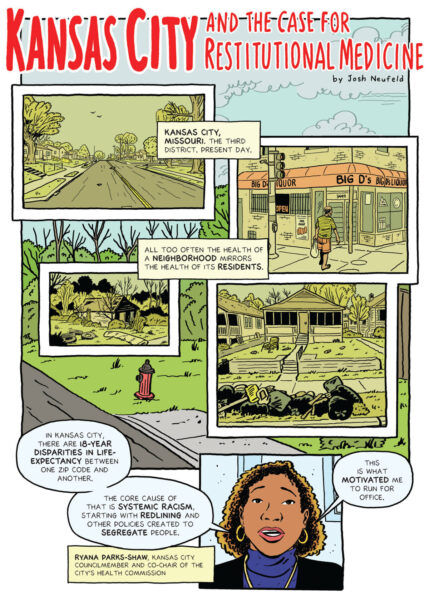
- “I spent all summer working on a new comics piece on the topic of reparations and health inequities, and it’s just been published! “comics journalist” Josh Neufeld writes. “Part of Harvard Public Health magazine’s special issue on structural racism, my piece, “Kansas City and the Case for Restitutional Medicine,” focuses the spotlight on KCMO. . . . KC Mayor Quinton Lucas . . . is part of a group of U.S. mayors who have committed themselves to create reparations programs in their cities as a model for future federal action. . . .”
- The News Leaders Association, which has had difficulty in recent years persuading news organizations to participate in its annual newsroom diversity count, [PDF] Monday began soliciting “proposals from researchers and institutions to conduct a Diversity Survey that improves on the participation rate of past surveys.”
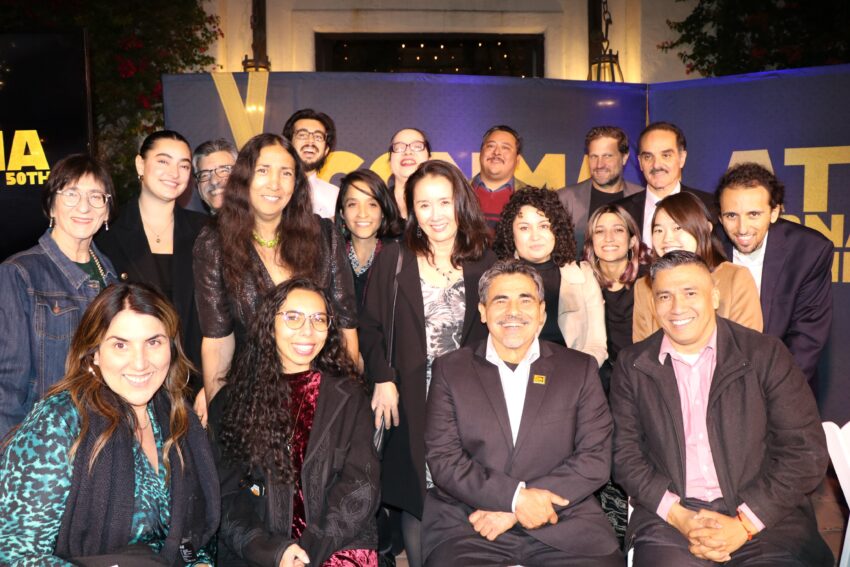
- CCNMA: Latino Journalists of California celebrated its 50th anniversary Friday at a celebration dinner in Los Angeles, where it bestowed awards. “CCNMA is planning different events during the 50th anniversary year and is looking for volunteers to help us commemorate this milestone,” according to its website. “Still thriving, it’s helped launch and advance the careers of hundreds of journos while working to improve news coverage of Latinos. And it helped to jump-start the amazing NAHJ,” the National Association of Hispanic Journalists, Frank O. Sotomayor, co-founder of CCNMA and a 35-year veteran of the Los Angeles Times, wrote on Facebook. Pictured: A delegation from the L.A. Times (Twitter)
 “Gray Television said it promoted James Finch (pictured) to VP of news services,” Jon Lafayette reported Wednesday for nexttv.com. “Finch has been managing news vendor partnerships for Gray for several [years] and helped Gray’s stations with content and resource sharing. In his new role, Finch will also lead a new in-house news training program and oversee regional content producers.” Atlanta-based Gray says it is “the nation’s second largest television broadcaster, with television stations serving 113 markets that reach approximately 36 percent of US television households.”
“Gray Television said it promoted James Finch (pictured) to VP of news services,” Jon Lafayette reported Wednesday for nexttv.com. “Finch has been managing news vendor partnerships for Gray for several [years] and helped Gray’s stations with content and resource sharing. In his new role, Finch will also lead a new in-house news training program and oversee regional content producers.” Atlanta-based Gray says it is “the nation’s second largest television broadcaster, with television stations serving 113 markets that reach approximately 36 percent of US television households.”
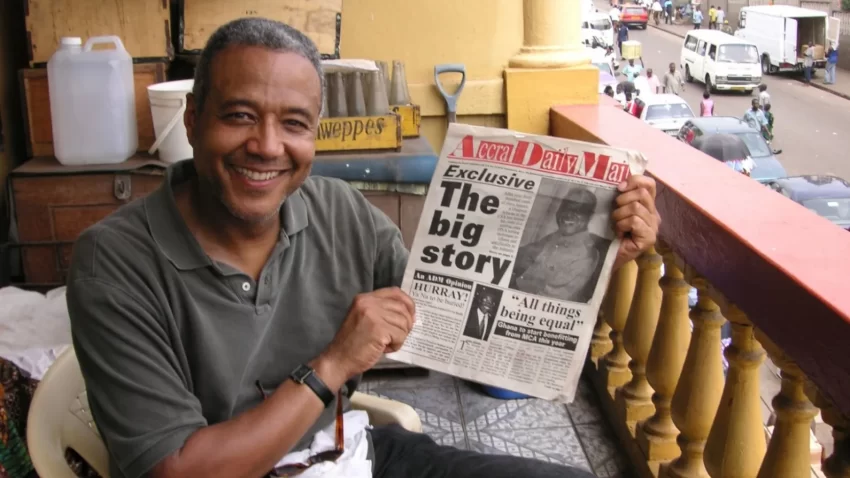
- Ron E. Claiborne, who retired from ABC News in 2018 after 32 years as a national and international news correspondent, describes his elation at discovering his roots among the Ashante people of Ghana in a piece that ran in the Deseret News of Salt Lake City, workplace of a former colleague, on Oct. 14. After Claiborne wrote in 2005 about DNA technology helping African Americans discover their ancestry, his producers “asked me to tell the story about the DNA tests through my own experience — they wanted me to take the genetic test and reveal the result” on “Good Morning America.” That led to a trip to Ghana, where “I felt something like what I had seen and envied in my classmates so many years before when they had proclaimed their ethnic pride. These were my people. Tough and independent. Unconquerable.”
- “Women and minority TV creators, writers, directors and cast members continue to make progress towards greater inclusion, both in front of and behind the camera, according to the latest Hollywood Diversity report from UCLA,” David Robb reported Oct. 27 for Deadline. “Latinos, however, remain woefully underrepresented, and were the ‘only group to be severely underrepresented’ across all three platforms – broadcast, cable and streaming.”
 Andrew Humphrey (pictured), for 20 years a meteorologist and station scientist at WDIV-TV in Detroit, is moving to Memphis as chief meteorologist of Severe Weather Center 13, WHBQ-TV, known as FOX13, the station Friday. Humphrey has taught weather and reporting at the University of Michigan in Ann Arbor and Morgan State University and has researched gravity waves and tropical deforestation at NASA and jet streaks at the National Weather Service, according to a news release, Katherine Burgess reported for the Memphis Commercial Appeal. Humphrey also founded and chaired the Digital Journalism Task Force of the National Association of Black Journalists. (Added Nov. 7)
Andrew Humphrey (pictured), for 20 years a meteorologist and station scientist at WDIV-TV in Detroit, is moving to Memphis as chief meteorologist of Severe Weather Center 13, WHBQ-TV, known as FOX13, the station Friday. Humphrey has taught weather and reporting at the University of Michigan in Ann Arbor and Morgan State University and has researched gravity waves and tropical deforestation at NASA and jet streaks at the National Weather Service, according to a news release, Katherine Burgess reported for the Memphis Commercial Appeal. Humphrey also founded and chaired the Digital Journalism Task Force of the National Association of Black Journalists. (Added Nov. 7)
- “Next Generation Radio, Native American Journalists Association and KOSU have announced the cohort for the 2022 NAJA-NPR NextGenRadio: Indigenous,” the public radio station, which is owned by Oklahoma State University, announced Thursday. “This five-day, digital-first workshop Nov. 13-18 centers Indigenous stories and storytellers. The project is offered at no cost to early-career Indigenous journalists reporting in or near a tribal community, and is an immersive training opportunity to learn more about non-narrated audio storytelling, and other forms of digital journalism. . . .”
- In Salem, Ore., Capital Community Media has hired Meghan Jonas as community news director, “leading their effort to create a program that trains citizens in journalism ethics and reporting to help improve the diversity of local reporting,” Abbey McDonald reported Oct. 27 for the Salem Reporter. “Jonas’ long term goal for the department is to have a team of trained citizen journalists doing in-depth reporting on their own communities. She said she hopes to reach communities who aren’t typically represented in traditional media, including the LGBTQ+ community, BIPOC community and youth. . . .”
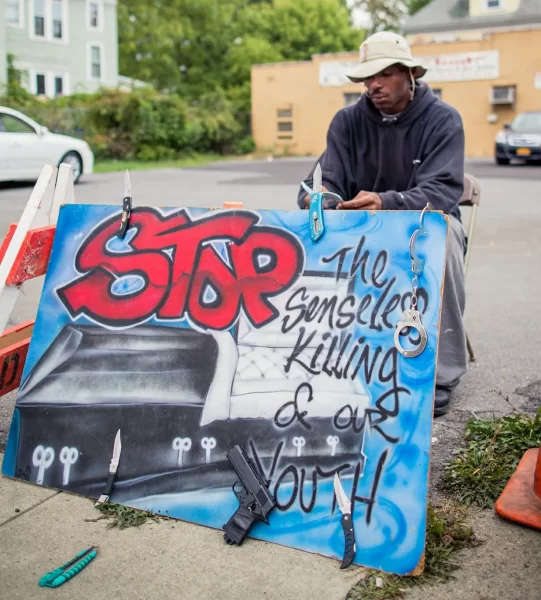
- “The Stand, a nonprofit news outlet covering the south side of Syracuse, encourages residents to become contributors to the news outlet,” the American Press Institute reported, summarizing a story Tuesday in Current. “During a workshop about community issues, residents said they were curious about Bernard Cannon, a man who stands on the street with a poster reading ‘Stop the Senseless Killing of Our Youth.’ A community contributor and student photographer covered Cannon’s campaign and his life story, which has been deeply impacted by violence. In future sessions, readers said that Cannon’s backstory gave them a new appreciation for a man they had previously dismissed. . . .”
- Longtime Nashville news anchor Demetria Kalodimos and Steve Cavendish, former editor of the alternative Nashville Scene, are reviving the Nashville Banner, which served as the city’s afternoon paper for 122 years until it closed in 1998. This incarnation “will be web-based, but we will be free to everyone,” Cavendish told Chris Davis of Nashville’s WTVF on Oct. 26. ” ‘We’re not going to do opinion; we’re not going to have an editorial board; we’re not going to endorse candidates,’ said Cavendish, who is also a veteran of other publications like the Chicago Tribune and The Washington Post. . . . When the new Banner fully launches in 2023, they’ll also become news partners with NewsChannel 5, meaning Demetria’s familiar face will finally return to Nashville television. . . . “
- WLAE, a New Orleans public television station, is airing a new documentary that tells the story of one of the oldest Black neighborhoods in the city that was razed during the Civil Rights struggles 60 years ago, Paul Greeley reported Oct. 28 for TVNewsCheck. The hour-long documentary, which airs again on Thanksgiving night, Nov. 24, and Nov. 25, “features never-before-seen photos of Fazendeville, an idyllic, closely-knit St. Bernard Parish neighborhood of Black families who were forced to leave their homes in the 1960s. Families in the neighborhood were paid pennies on the dollar by the federal government to leave their homes so the land could be used for an expansion of the Chalmette National Battlefield site.” The program is narrated by displaced Black residents.
 Gloria Rojas (pictured), who died Feb. 2 at 82, ” broke through mainstream television as the first Puerto Rican woman and Latina on-air journalist in New York City,” Aurora Flores-Hostos wrote Oct. 24 for the Women’s Media Center. Flores-Hostos worked with Rojas in the WABC newsroom. “The only time Gloria’s name came up was when the assignment desk couldn’t decide who to send to the ‘c-nt conferences’ Producers constantly threatened to replace us with people who would do this ‘glamor’ job for free. One particularly ornery producer was appalled that I would ‘admit’ to being Puerto Rican. ‘Don’t you know you people are the bastards of the Caribbean,’ he yelled. ‘You can’t speak Spanish or English.’ . . . Our best tribute to her, to the [Glorias] of now and the future, would be to insist on dismantling racism and sexism.”
Gloria Rojas (pictured), who died Feb. 2 at 82, ” broke through mainstream television as the first Puerto Rican woman and Latina on-air journalist in New York City,” Aurora Flores-Hostos wrote Oct. 24 for the Women’s Media Center. Flores-Hostos worked with Rojas in the WABC newsroom. “The only time Gloria’s name came up was when the assignment desk couldn’t decide who to send to the ‘c-nt conferences’ Producers constantly threatened to replace us with people who would do this ‘glamor’ job for free. One particularly ornery producer was appalled that I would ‘admit’ to being Puerto Rican. ‘Don’t you know you people are the bastards of the Caribbean,’ he yelled. ‘You can’t speak Spanish or English.’ . . . Our best tribute to her, to the [Glorias] of now and the future, would be to insist on dismantling racism and sexism.”
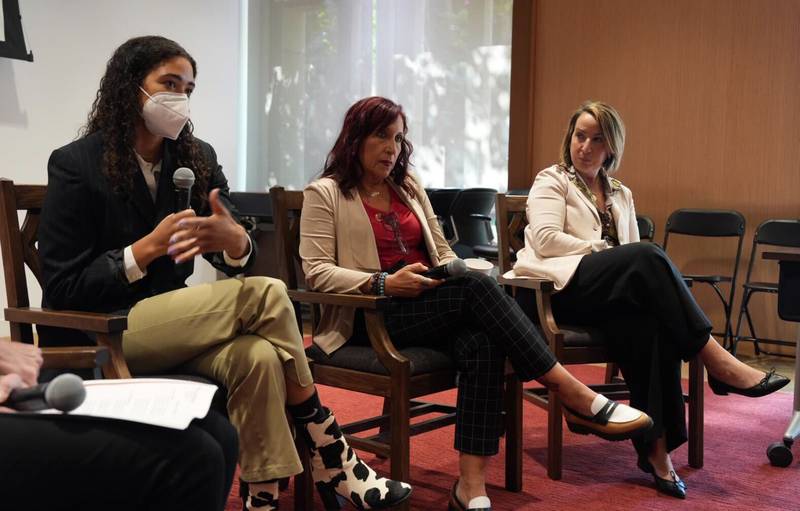
- “From public arrests to digital hacks, Cerise Castle and Mc Nelly Torres’ groundbreaking investigations inform the imperative to protect female journalists in newsrooms and beyond,” reads the subhead over a story from Vani Sanganeria at the USC Annenberg School for Communication and Journalism. Castle, who is Black, queer and a recipient of the nternational Women’s Media Foundation’s Courage in Journalism Award, joined USC Annenberg Dean Willow Bay, Torres and IWMF Executive Director Elisa Lees Muñoz in an Oct. 27 discussion with students and faculty. Torres, an editor at the Center for Public Integrity, said, “This is a very racist industry, and now that I’m an editor in a newsroom I started last year, I’m not going to sit down and allow anybody to come and attack my reporters who are people of color.” Castle was honored for a 15-part investigative series that exposed 18 sheriff’s deputy gangs, 19 documented murders — all of whom were people of color — and over $100 million in paid lawsuits by the LASD as of March 2021. The reporting has caused her to fear for her safety.
- “Latinas are the largest group of women of color affected by current and future state abortion bans and restrictions: More than 4 in 10 Latinas of reproductive age live in the nearly two dozen states where officials are working to make abortion inaccessible,” Nicole Acevedo reported Tuesday for NBC News, citing a new analysis from the National Partnership for Women & Families and the National Latina Institute for Reproductive Justice.
Greetings from the Hollywood Forever Noche de Muertos! This year the @latimes built an altar that pays tribute to former staffers and family members of current staffers, as well as ofrendas submitted by readers.
We’ve also built a digital altar: https://t.co/dtpBdBosKS pic.twitter.com/jS5mMjeQZB
— Fidel Martinez (@fidmart85) October 30, 2022
- “Like it did last year, the Los Angeles Times built an online space for people to share memories of those they’ve lost with a Día de Muertos digital altar,” Kristen Hare reported Wednesday for the Poynter Institute. ” ‘Now, because we were so blown away by the success of this project last year, we wanted to improve upon it,’ said Fidel Martinez, the Times’ editorial director for Latino initiatives and author of the Latinx Files newsletter. . . . .”

- “Civil Beat is going on the road,” Patti Epler wrote Oct. 23 for Honolulu Civil Beat. “For the next couple of months editors, reporters, photographers and multimedia producers plan to spend at least one day a week working out of a public library somewhere in Hawaii. We’re working with the Hawaii State Public Library System and individual librarians throughout the state to pull this off. We’re calling this concept ‘pop-up newsrooms’ and it’s aimed at getting our journalists out into parts of the state that we normally don’t spend much time in. . . .”
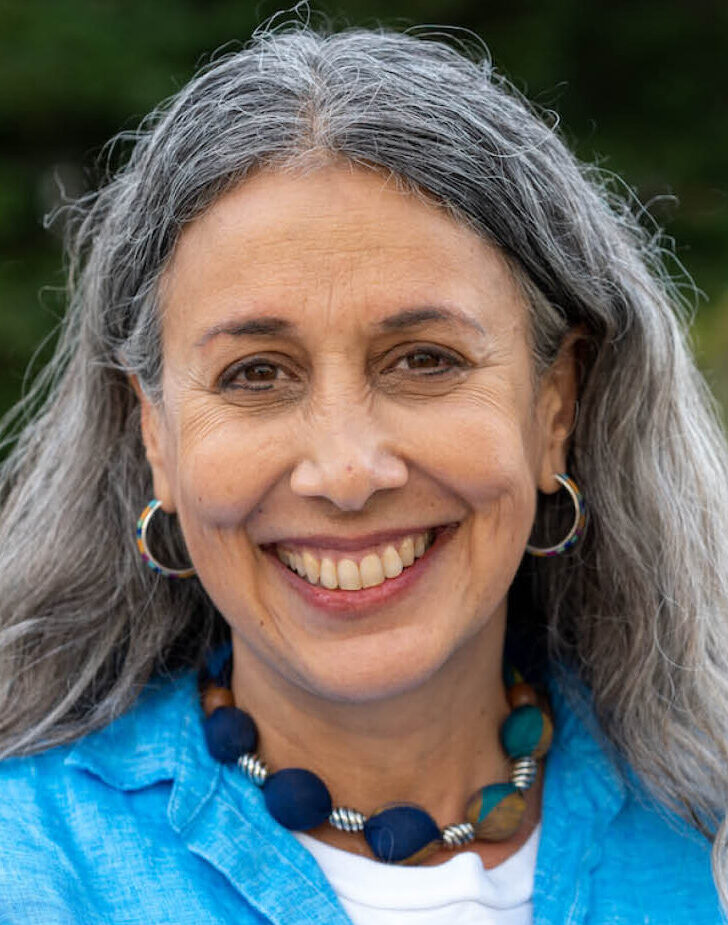 “The Dow Jones News Fund today announced Pulitzer Prize-winning journalist and author Geeta Anand (pictured) as the recipient of the inaugural Richard J. Levine Journalism Champion Award,” the fund announced Thursday. “Anand is the dean of the UC Berkeley Graduate School of Journalism, where in the two years since she became the school’s first female dean, she has taken meaningful steps to facilitate opportunities for historically marginalized groups in journalism. Most prominently, she secured $25 million to fund an unprecedented effort to support and strengthen local reporting in underserved and historically underrepresented areas throughout California and established a new fellowship program for youth in Richmond, California, to receive stipends to attend core Introduction to Reporting classes at the school. . . .”
“The Dow Jones News Fund today announced Pulitzer Prize-winning journalist and author Geeta Anand (pictured) as the recipient of the inaugural Richard J. Levine Journalism Champion Award,” the fund announced Thursday. “Anand is the dean of the UC Berkeley Graduate School of Journalism, where in the two years since she became the school’s first female dean, she has taken meaningful steps to facilitate opportunities for historically marginalized groups in journalism. Most prominently, she secured $25 million to fund an unprecedented effort to support and strengthen local reporting in underserved and historically underrepresented areas throughout California and established a new fellowship program for youth in Richmond, California, to receive stipends to attend core Introduction to Reporting classes at the school. . . .”
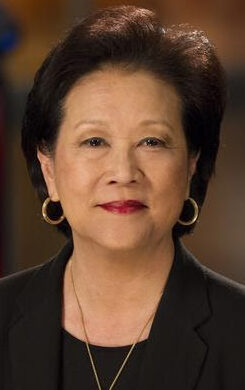 “Janet Wu (pictured), who has spent 50 years as a television journalist in Boston, will retire from WCVB Channel 5 as of the end of the year,” Don Seiffert reported Friday for Boston Business Journal. Boston Mayor Michelle Wu will declare Sunday, Nov. 6, “Janet Wu Day.”
“Janet Wu (pictured), who has spent 50 years as a television journalist in Boston, will retire from WCVB Channel 5 as of the end of the year,” Don Seiffert reported Friday for Boston Business Journal. Boston Mayor Michelle Wu will declare Sunday, Nov. 6, “Janet Wu Day.”
- The 2022 LION Local Journalism Awards for nonprofit local news organizations were bestowed in Austin, Texas, Oct. 28 at the Independent News Sustainability Summit, Joshua Benton reported Monday for Nieman Journalism Lab. “The three biggest winners Friday — each took home three awards — were Enlace Latino NC, Montana Free Press, and Santa Cruz Local. Those sites serve, respectively: Spanish speakers in North Carolina (roughly 690,000 people); Montana residents (1.1 million), and residents of metro Santa Cruz, Calif. (267,000). . . .” Benton added that Santa Cruz Local is technically not a nonprofit, but said “our ideals are similar to those of a nonprofit.”
- “Reporters Without Borders (RSF) has discovered how steel giant ArcelorMittal tracked down a UK-based website host to obtain the deletion of a Liberian news site’s investigation into the methods it used to acquire a mine in Liberia,” the press freedom group said Oct. 28. “But as a result, the overly obliging host blocked access to the entire website and left it blocked. The matter is now before the courts in Liberia. . . .”
 In Britain, “The Barbara Blake-Hannah (pictured) Press Gazette award, which was created for up-and-coming Black and minority ethnic journalists in the wake of the BLM protests in 2020 and named after me, was cancelled after just two years,” Blake-Hannah, the first visibly Black TV journalist in Britain, wrote Oct. 27 for the Guardian. “The excuse the awards organisers gave was that they wanted to ‘ensure a diverse range of people are recognised across the awards, not focused on one category’. The ‘one category’ being Black journalists. It’s dispiriting, but all I can do is fight on. . . .” Blake-Hannah wrote under the headline, “My Black skin got me sacked from British TV. That’s why I spend my life fighting racism.”
In Britain, “The Barbara Blake-Hannah (pictured) Press Gazette award, which was created for up-and-coming Black and minority ethnic journalists in the wake of the BLM protests in 2020 and named after me, was cancelled after just two years,” Blake-Hannah, the first visibly Black TV journalist in Britain, wrote Oct. 27 for the Guardian. “The excuse the awards organisers gave was that they wanted to ‘ensure a diverse range of people are recognised across the awards, not focused on one category’. The ‘one category’ being Black journalists. It’s dispiriting, but all I can do is fight on. . . .” Blake-Hannah wrote under the headline, “My Black skin got me sacked from British TV. That’s why I spend my life fighting racism.”
 “The BBC plans to cut dozens of the roles of its Africa Service journalists as it shifts from television and radio to digital distribution,” Alexis Akwagyiram, with Yinka Adegoke, reported Oct. 24 for the Semafor startup. “The moves, which will cut nearly half of the BBC Africa jobs in London, include eliminating about 50 of the 130 jobs on BBC Africa, a representative of Britain’s National Union of Journalists, Paul Siegert, told Semafor. The BBC will shut down Hausa TV, Somali TV, Afrique TV, and . . . some children’s shows, and convert many African language programs to digital only services.” Rodney Sieh, editor and publisher of the Liberia-focused FrontPageAfrica and a former BBC journalist, objected to the reformatting of “Focus on Africa.” Sieh wrote Oct. 26, “In essence, the real voices of Africa will no longer be able to tell the real African stories and news as it happens signaling a rather controversial paradigm shift poised to slowly and partially erase the continent from the BBC programming.”
“The BBC plans to cut dozens of the roles of its Africa Service journalists as it shifts from television and radio to digital distribution,” Alexis Akwagyiram, with Yinka Adegoke, reported Oct. 24 for the Semafor startup. “The moves, which will cut nearly half of the BBC Africa jobs in London, include eliminating about 50 of the 130 jobs on BBC Africa, a representative of Britain’s National Union of Journalists, Paul Siegert, told Semafor. The BBC will shut down Hausa TV, Somali TV, Afrique TV, and . . . some children’s shows, and convert many African language programs to digital only services.” Rodney Sieh, editor and publisher of the Liberia-focused FrontPageAfrica and a former BBC journalist, objected to the reformatting of “Focus on Africa.” Sieh wrote Oct. 26, “In essence, the real voices of Africa will no longer be able to tell the real African stories and news as it happens signaling a rather controversial paradigm shift poised to slowly and partially erase the continent from the BBC programming.”
- “To the many Israelis shocked by the meteoric rise of Itamar Ben Gvir, an anti-Arab far-right politician set to be at the center of Israel’s next government, media analysts offer a simple explanation: excessive airtime,“ Shira Rubin and Claire Parker wrote Thursday for The Washington Post. “ ‘He got media coverage with no comparison to any other politician or candidate in Israel,’ said Tehilla Shwartz Altshuler of the Israel Democracy Institute, a Jerusalem-based think tank. Even former prime minister Benjamin Netanyahu, who will use Ben Gvir’s votes to return to power, said the media coverage of him was overblown. . . .”
- “Months after Russia invaded Ukraine and media companies dropped the country’s state programming, Russian government funding continues to flow into U.S. media,” Hailey Fuchs, with Daniel Lippman, wrote Oct. 27 for Politico. “Between April and the end of September, Russian state media group Rossiya Segodnya funneled $3,284,169 to Ghebi, a company that produces articles, newswires and a number of radio shows. During that same period, Ghebi spent $2,183,640.72 on behalf of its client, according to an October filing with the Department of Justice made under the Foreign Agents Registration Act. POLITICO Influence reported in August that Ghebi and the agency, which controls the media outlet Sputnik, had renewed their contract, with a yearlong budget set for $7 million, the biggest since Ghebi began reporting its contracts to the Department of Justice. Although companies including YouTube and DirecTV have dropped Russian state media, the country’s government appears to continue to see value in media spending, even as it wages war in Ukraine. . . .”
- “Closing the Beijing bureau is the last thing we want to do, but our hand has been forced,“ Brodie Fenlon, editor in chief and executive director of programs and standards for CBC News, wrote Wednesday for the Canadian Broadcasting Co. “Our commitment to covering China and East Asia is steadfast. We will begin the process of finding a new home base in the months ahead. Until then, we will deploy to the region when it makes sense. And [correspondent Philippe] Leblanc will work from a new post in Taiwan for the next two years. We hope China will someday open up again to our journalists, just as we hope Russia will one day reconsider its decision to expel us. . . .”
- The Sudanese Journalists Syndicate said that the media in Sudan have faced unprecedented targeting since the October 2021 coup, Dabanga Sudan reported Oct. 26. Marking the first anniversary of a coup that derailed Sudan’s transition to civilian rule, the organization said, “The Sudanese press suffers from oppression, threats, brutal beatings, revenge attacks, summons and detentions, in addition to raids of press offices, destruction of equipment, and obscene verbal abuse against men and women journalists and photographers in an unprecedented way since the military coup. . . . Authorities blocked internet access nationwide yesterday, echoing actions taken last year during the coup.”
 In Mexico, more than five years have passed since RíoDoce magazine editor Andrés Villarreal and Ismael Bojórquez, RíoDoce’s co-founder and editor-in-chief, “received the suspicious text messages that experts said bore telltale signs of Pegasus, the now notorious surveillance software developed by Israeli firm NSO Group,” Jan-Albert Hootsen reported Oct. 13 for the Committee to Protect Journalists. “Just this month, a joint investigation by three Mexican rights groups and the University of Toronto’s Citizen Lab found evidence of Pegasus infections on the devices of two Mexican journalists and a human rights defender between 2019 and 2021 – infiltration that occurred in spite of Mexican President Andrés Manuel López Obrador’s 2018 promise to end illegal surveillance. . . .”
In Mexico, more than five years have passed since RíoDoce magazine editor Andrés Villarreal and Ismael Bojórquez, RíoDoce’s co-founder and editor-in-chief, “received the suspicious text messages that experts said bore telltale signs of Pegasus, the now notorious surveillance software developed by Israeli firm NSO Group,” Jan-Albert Hootsen reported Oct. 13 for the Committee to Protect Journalists. “Just this month, a joint investigation by three Mexican rights groups and the University of Toronto’s Citizen Lab found evidence of Pegasus infections on the devices of two Mexican journalists and a human rights defender between 2019 and 2021 – infiltration that occurred in spite of Mexican President Andrés Manuel López Obrador’s 2018 promise to end illegal surveillance. . . .”
- “Two journalists in Iran, both women, did what independent journalists are supposed to do when they see an injustice — they reported on it,” The Washington Post editorialized Tuesday. “Reporters Niloofar Hamedi and Elahe Mohammadi helped expose the tragedy of the young Kurdish Iranian woman, Mahsa Amini, who died Sept. 16 after being detained in Tehran by the Islamic ‘morality police’ for an alleged headscarf violation. Her death set off a nationwide uprising led by women. Now, the journalists are in prison — simply for having disseminated the facts. . . .”
-
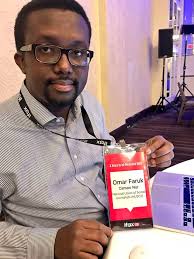 “According to data collated by the National Union of Somali Journalists (NUSOJ), 54 journalists have been murdered over the past decade,” Omar Faruk Osman (pictured), secretary general of the group, wrote Wednesday for Al Jazeera. “The most recent victim, TV journalist Mohamed Isse Hassan was killed on October 29 in a car bombing while he and others were covering another explosion in the capital Mogadishu. The twin bombings killed more than 100 people in total. Yet, barring one conviction earlier this year, those responsible for these killings have never been brought to justice. Nor have those who ordered the assassinations. . . . Amid the conflict between different armed groups and the government that continues to rage in the country, there is a lack of political will from any major actor to end this deadly violence against journalists. Each political side wants to control and manipulate news and information, and independent and critical journalism draws retaliation. There is an unstated compact between political forces that there need be no fear of any accountability for such crimes. . . .”
“According to data collated by the National Union of Somali Journalists (NUSOJ), 54 journalists have been murdered over the past decade,” Omar Faruk Osman (pictured), secretary general of the group, wrote Wednesday for Al Jazeera. “The most recent victim, TV journalist Mohamed Isse Hassan was killed on October 29 in a car bombing while he and others were covering another explosion in the capital Mogadishu. The twin bombings killed more than 100 people in total. Yet, barring one conviction earlier this year, those responsible for these killings have never been brought to justice. Nor have those who ordered the assassinations. . . . Amid the conflict between different armed groups and the government that continues to rage in the country, there is a lack of political will from any major actor to end this deadly violence against journalists. Each political side wants to control and manipulate news and information, and independent and critical journalism draws retaliation. There is an unstated compact between political forces that there need be no fear of any accountability for such crimes. . . .”
To subscribe at no cost, please send an email to journal-isms+subscribe@groups.io and say who you are.
Facebook users: “Like” “Richard Prince’s Journal-isms” on Facebook.
Follow Richard Prince on Twitter @princeeditor
Richard Prince’s Journal-isms originates from Washington. It began in print before most of us knew what the internet was, and it would like to be referred to as a “column.” Any views expressed in the column are those of the person or organization quoted and not those of any other entity. Send tips, comments and concerns to Richard Prince at journal-isms+owner@
View previous columns (after Feb. 13, 2016).
View previous columns (before Feb. 13, 2016)
- Diversity’s Greatest Hits, 2018 (Jan. 4, 2019)
- Book Notes: Is Taking a Knee Really All That? (Dec. 20, 2018)
- Book Notes: Challenging ’45’ and Proudly Telling the Story (Dec. 18, 2018)
- Book Notes: Get Down With the Legends! (Dec. 11, 2018)
- Journalist Richard Prince w/Joe Madison (Sirius XM, April 18, 2018) (podcast)
- Richard Prince (journalist) (Wikipedia entry)
- February 2018 Podcast: Richard “Dick” Prince on the need for newsroom diversity (Gabriel Greschler, Student Press Law Center, Feb. 26, 2018)
- Diversity’s Greatest Hits, 2017 — Where Will They Take Us in the Year Ahead?
- Book Notes: Best Sellers, Uncovered Treasures, Overlooked History (Dec. 19, 2017)
- An advocate for diversity in the media is still pressing for representation, (Courtland Milloy, Washington Post, Nov. 28, 2017)
- Morgan Global Journalism Review: Journal-isms Journeys On (Aug. 31, 2017)
- Diversity’s Greatest Hits, 2016
- Book Notes: 16 Writers Dish About ‘Chelle,’ the First Lady
- Book Notes: From Coretta to Barack, and in Search of the Godfather
- Journal-isms’ Richard Prince Wants Your Ideas (FishbowlDC, Feb. 26, 2016)
- “JOURNAL-ISMS” IS LATEST TO BEAR BRUNT OF INDUSTRY’S ECONOMIC WOES (Feb. 19, 2016)
- Richard Prince with Charlayne Hunter-Gault, “PBS NewsHour,” “What stagnant diversity means for America’s newsrooms” (Dec. 15, 2015)
- Book Notes: Journalists Follow Their Passions
- Book Notes: Journalists Who Rocked Their World
- Book Notes: Hands Up! Read This!
- Book Notes: New Cosby Bio Looks Like a Best-Seller
- Journo-diversity advocate turns attention to Ezra Klein project (Erik Wemple, Washington Post, March 5, 2014)
When you shop @AmazonSmile, Amazon will make a donation to Journal-Isms Inc. https://t.co/OFkE3Gu0eK
— Richard Prince (@princeeditor) March 16, 2018

